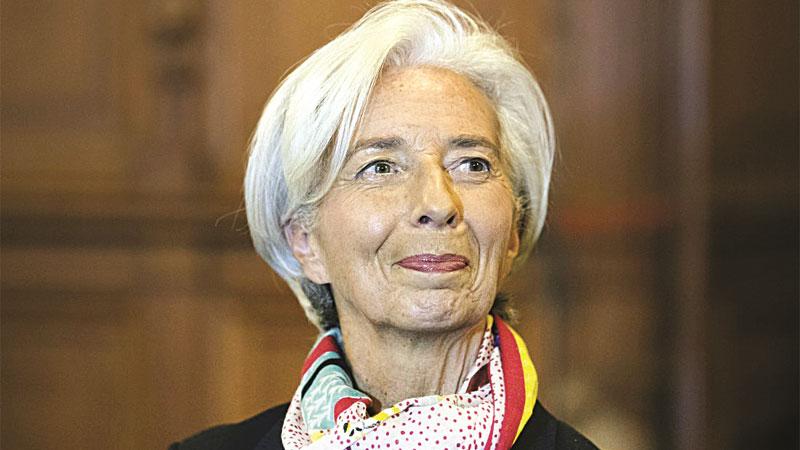
The International Monetary Fund (IMF) Managing Director Christine Lagarde said she would come to Sri Lanka but cannot pin down an exact time-frame when she would make the visit.
“I would love to come to Sri Lanka but it’s my program that holds me back. Sri Lanka is doing good and I would like to see more positive results,” the IMF Chief said when she met journalists at the Spring Meetings in Washington. The IMF in its Asia and the Pacific Regional Economic Outlook stated that Sri Lanka’s economy will grow to around 4.5-4.9 percent this year. However, the Fund noted that growth would depend on structural reforms, sound foreign reserves and improved performance in State-owned enterprises.
“We see some improvement in the economy of Sri Lanka this year compared to last year.
However, concerns remain and they need the urgent attention of the authorities,” IMF Director Asia Pacific Department Changyong Rhee said.
The Fund at its second review in March this year commended the government for its efforts to implement the policy reforms under the Extended Fund Facility (EFF) program.
Sri Lanka entered into a three-year EFF program with the IMF mid last year to support its ambitious development program.
However, concerns in addressing structural and fiscal policy reforms such as implementing a robust tax administration remained high in the Fund’s last review.
In its regional Out Look, the IMF said it expects growth in the Asia Pacific region to accelerate to 5.5 percent this year from 5.3 percent last year
Growth in Japan and India are expected to pick up this year with growth in India expected to rebound to 7.2 percent this year and 7.7 percent next year.
However, GDP growth in China is expected to moderate in the second half this year as recent tightening measures take effect.
According to the forecast, Asia is poised to remain the global growth leader into the future. But as in the past, securing this position will need continuing policy upgrades, vigilance against risks and reforms to boost domestic demand and address growth bottlenecks.
